eDNA Collaborative Programs
The eDNA Collaborative supports both application-based and non-application-based programs.
Application-Based Programs
Microgrants
The Micro-scale grants, or ‘microgrants’ program focuses on new eDNA research in strategic categories of interest while also increasing access outside of well-resourced and high-data environments. It is for researchers needing very specific equipment, materials, supplies, or training to achieve their objectives towards eDNA research and analyses.
Our Microgrant Program supports eDNA research in the form of materials, equipment, or educational learning. The primary purpose of these ~$1,000 USD micro grants is to provide funding to traditionally under-funded and under-resourced areas where one or two additional items are critical to the success of a project.
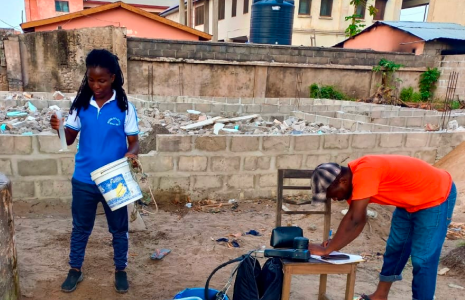
Dr. Charles Abimbola Faseyi and Grace Emuobonuvie Ayeta sampling groundwater in Keta, Ghana.
Photo credit: Stephen Kwaw (All at University of Cape Coast, Ghana)
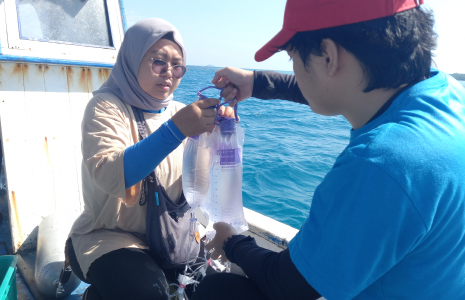
Eka Maya Kurniasih from Graduate School of Engineering and Science, University of The Ryukyus (Okinawa, Japan) and Muhammad Salauddin Ramadhan Djarod from Seacrest – Seagrass Conservation and Research Center (Indonesia) labeling and placing water samples in a cool box for later processing in Karimunjawa, Central Java, Indonesia
Photo credit: Nining Nursalim Diponegoro Marine Biodiversity Laboratory, Universitas Diponegoro (Indonesia)
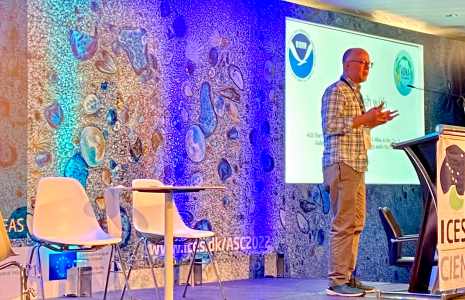
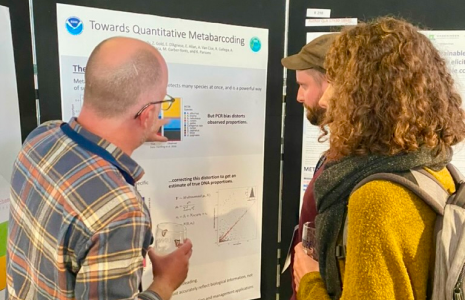
Ryan Kelly discussing quantitative metabarcoding at the 2022 International Council for the Exploration of the Sea (ICES) Annual Conference in Dublin, Ireland.
Workshops and Meeting Support
The eDNA Collaborative’s newest program is designed to directly support scientific workshops and meetings by providing funds to assist with registration, tuition and other expenses that may otherwise limit participant attendance.
We are still working out details for how meeting and conference sponsors can apply for support. More information coming soon.
Non-Application-Based Programs
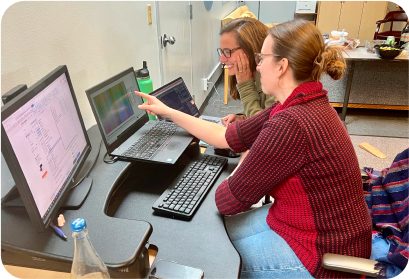
Visiting Scholar Bettina Thalinger, a Senior Scientist at the Applied Animal Ecology Research Unit (Department of Zoology) at the University of Innsbruck (Austria), in Seattle, WA with eDNA Collaborative Chief Scientist Eily Allan.
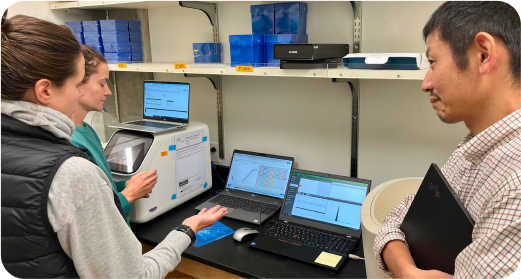
Visiting Scholar Hiroki Yamanaka, an associate professor at Ryukoku University, Japan, in Seattle, WA with eDNA Collaborative Chief Scientist Eily Allan and Research Scientist Megan Shaffer.
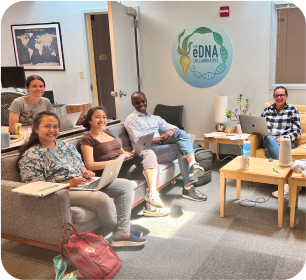
Visiting Scholars Ni Kadek Dita Cahyani, a lecturer at Diponegoro University, Indonesia, and Koffi Nouho Ouattara, a lecturer, researcher and department head at Nangui Abrogoua University, Abidjan, Cote d’Ivoire in Seattle, WA with members of the eDNA Collaborative.
Visiting Scholars
A central element of The eDNA Collaborative is to build a global network of eDNA researchers and users. The Visiting Scholars Program supports this by bringing investigators to The eDNA Collaborative headquarters in Seattle, Washington for an exchange of ideas and analytical techniques. For the week-long visit, Scholars bring their own research to work on collaboratively with our Chief Scientist and the rest of the core eDNA Collaborative team.
While in Seattle, Scholars give a public presentation and if desired, may meet with other University of Washington, NOAA, or external researchers in Seattle during their visit. Upon leaving Seattle, Scholars become part of the eDNA Collaborative’s affiliated researcher cohort for ongoing collaboration and consultation.
The eDNA Collaborative Visiting Scholars Program supports approximately four to six scholars per year. In some cases, two or more Scholars may participate in a joint visitation session to connect similar or complimentary skill sets and foster new collaborations across institutions and sectors.
Though most Scholars will come to our headquarters in Seattle, Washington, our team may, instead, meet Scholars at their home institution or another location depending on the project and collaborators involved. The eDNA Collaborative team hosts several pre- and post-visit virtual meetings in preparation for the visit and to follow up on discussions and future collaborations.
The eDNA Collaborative covers costs for travel and expenses as well as an honorarium for the week.
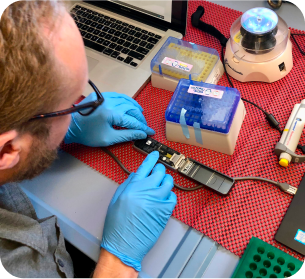
Testing out the Oxford Nanopore MinIon.
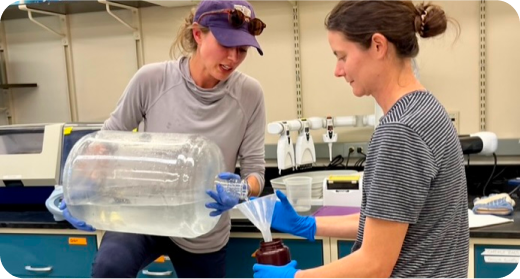
eDNA Collaborative Chief Scientist Eily Allan and Research Scientist Megan Shaffer subdividing water samples.
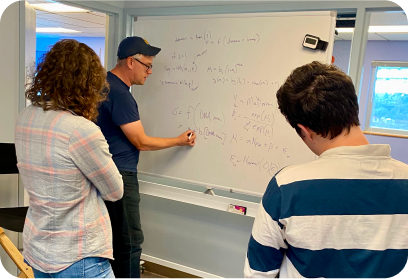
NOAA scientist Ole Shelton working out modeling terms with eDNA Collaborative visitors.
Core Research
The eDNA Collaborative is working to make eDNA techniques more accessible to more people throughout the world. This includes developing cheaper and more robust lab and field methods for eDNA and publicizing those results with an aim toward driving the costs of eDNA analysis down and participation up. These efforts center on addressing challenges common in countries that are historically underrepresented in molecular-ecological research.